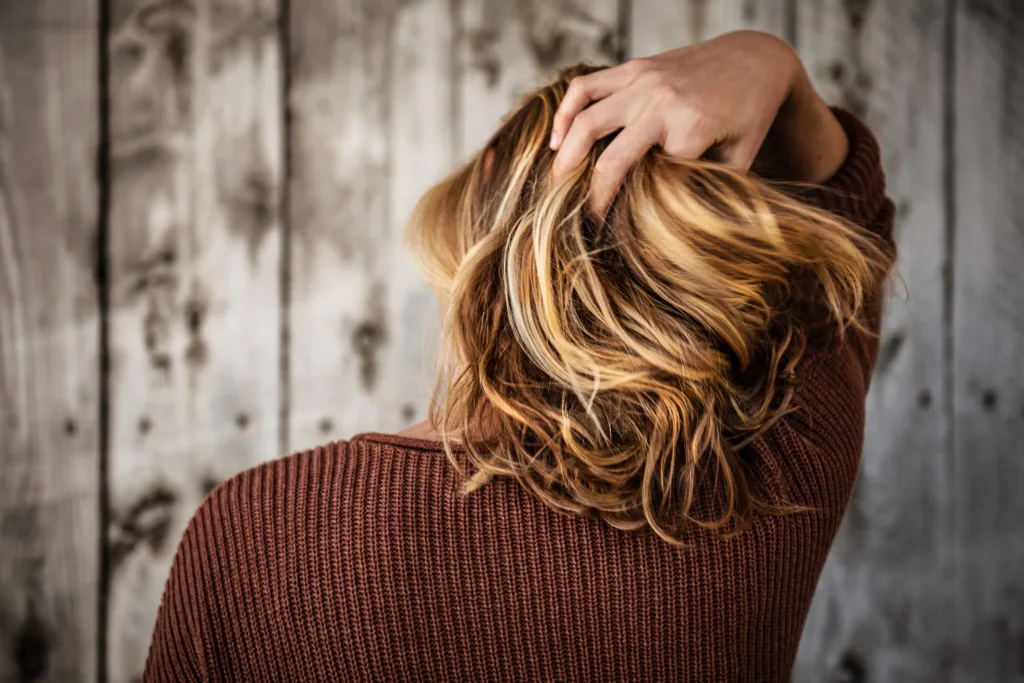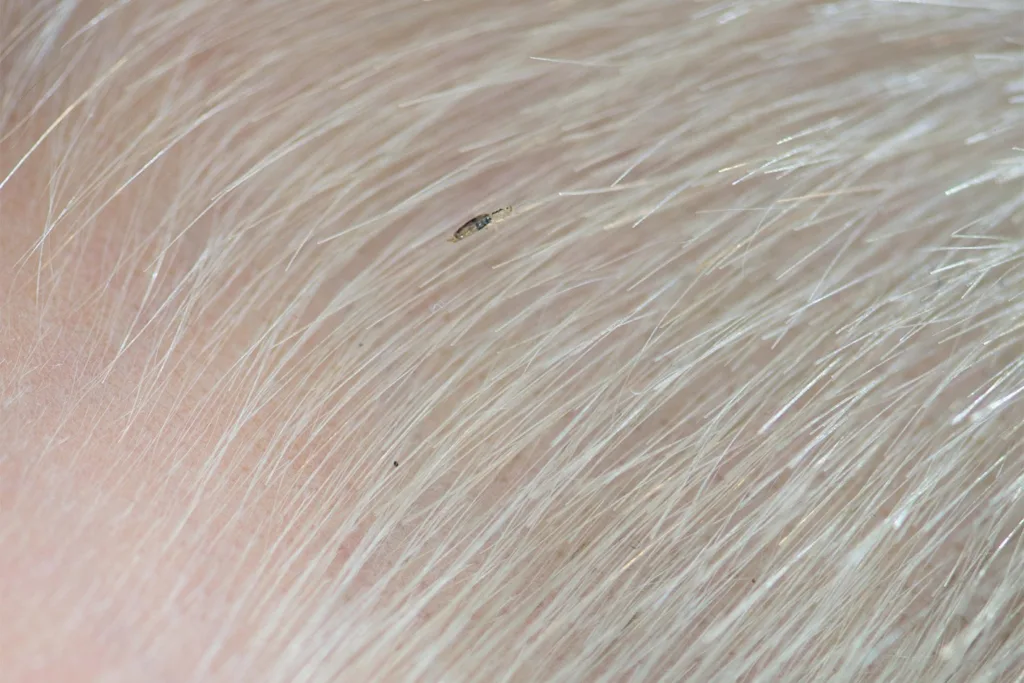Lice infestations are a common problem, especially among school-age children. Head lice are tiny insects that live on the scalp and feed on human blood. They lay eggs, called nits, on the hair shafts close to the scalp. Nits are oval-shaped and about the size of a pinhead. They are attached to the hair shaft with a glue-like substance and can be very difficult to remove.
Live lice eggs are small brown or tan colored dots on hair shafts close to the scalp. These eggs are not easy to spot and can be confused with dandruff. However, they are more difficult to remove than dandruff flakes. Live lice eggs are usually laid within 1cm of the scalp, where the temperature is warm enough for them to hatch.
Lice eggs take about 7-10 days to hatch into head lice. Once they hatch, the empty eggshell, or nit, stays attached to the hair shafts. Nits may remain afer lice have gone. They are empty eggshells and stick strongly to hair. They will eventually fall out, but it may take several weeks. If you want to remove nits, a fine-toothed ‘nit comb’ can help. However, it can be time-consuming and challenging to remove all the nits.
A dead lice egg will be white or grey. Dead nits are often black in color and are found well away from the scalp. Dead lice eggs are easier to remove than live nits. If you find a dead nit, it means that the louse has already hatched and left the egg.
It’s essential to distinguish between live and dead lice eggs because it can impact the treatment method. If you find live eggs, it means that the lice infestation is still active, and you need to treat it immediately. Dead eggs do not require treatment because the lice have already hatched. However, you still need to remove the dead nits to prevent a re-infestation.
Lice eggs are a common problem among school-age children. Live lice eggs are small brown or tan colored dots on hair shafts close to the scalp. Dead lice eggs are white or grey and are found well away from the scalp. Removing nits can be time-consuming and challenging. It’s essential to distinguish between live and dead lice eggs to determine the treatment method. If you find live eggs, you need to treat the lice infestation immediately. Dead eggs do not require treatment but need to be removed to prevent a re-infestation.
Can Dead Lice Eggs Stay In Hair?
Dead lice eggs, also known as nits, can remain in the hair even after the lice have been treated and removed. Nits are the empty eggshells left beind after the lice have hatched and they are attached to the hair shaft with a glue-like substance. They can be difficult to remove as they stick strongly to the hair. However, they will eventually fall out on their own. Alternatively, a fine-toothed nit comb can be used to remove them. It is important to note that the presence of nits does not necessarily mean an active lice infestation, as they may be remnants from a previous infestation.

Are Lice Eggs White When Dead?
Lice eggs are white or grey when dead. A dead lice egg can be easily identified by its color as it will not have the dark golden-brown color of a live egg. Lice eggs, also known as nits, are tiny and can be difficult to spot, but a dead egg will have a different appearance than a live one. It’s important to remove both live and dead lice eggs from the hair to prevent further infestation and ensure complete treatment.
What Color Are Living Lice Eggs?
Live lice eggs typically have a small size and are found on the hair shafts, near the scalp. They are usually brown or tan in color and can be quite challenging to detect. While broken eggshells or nits can be spotted easily, the living lice eggs are difficult to identify due to their tiny size and close proximity to the scalp. It is common for parents to mistake them for dandruff, which is why it is essential to know the difference between the two. By being aware of the color and appearance of live lice eggs, one can take necessary steps to prevent and treat lice infestations effectively.
What Color Are Dead Lice Eggs After Treatment?
Dead lice eggs, also known as nits, can vary in color after treatment. In most cases, they will turn a darker color such as black or brown. This is because the treatment may cause the egg to dry out and become desiccated, causing a change in color. It’s important to note that nits are usually laid on the hair shaft within 1cm of the scalp and are typically found close to the scalp. Therefore, if you find dead nits well away from the scalp, it’s likely that they have already hatched and are no longer a concern. Additionally, it’s important to check the hair thoroughly for any live lice or nymphs, as they can stll be present even if the nits are dead.

Conclusion
Lice eggs, also known as nits, can be a tricky obstacle to overcome when dealing with head lice. They are small, oval-shaped, and stick strongly to hair shafts close to the scalp. It can be difficult to distinguish between live and dead nits, but a fine-toothed nit comb can help remove them. Nits may remain in the hair even after the lice have been treated and are empty eggshells that will eventually fall out. It’s important to note that mistaking nits for dandruff is common, but it’s essential to identify and remove them to prevent further infestation. Understanding what lice eggs look like and whee they are located on the hair shaft is crucial in treating and preventing head lice.
